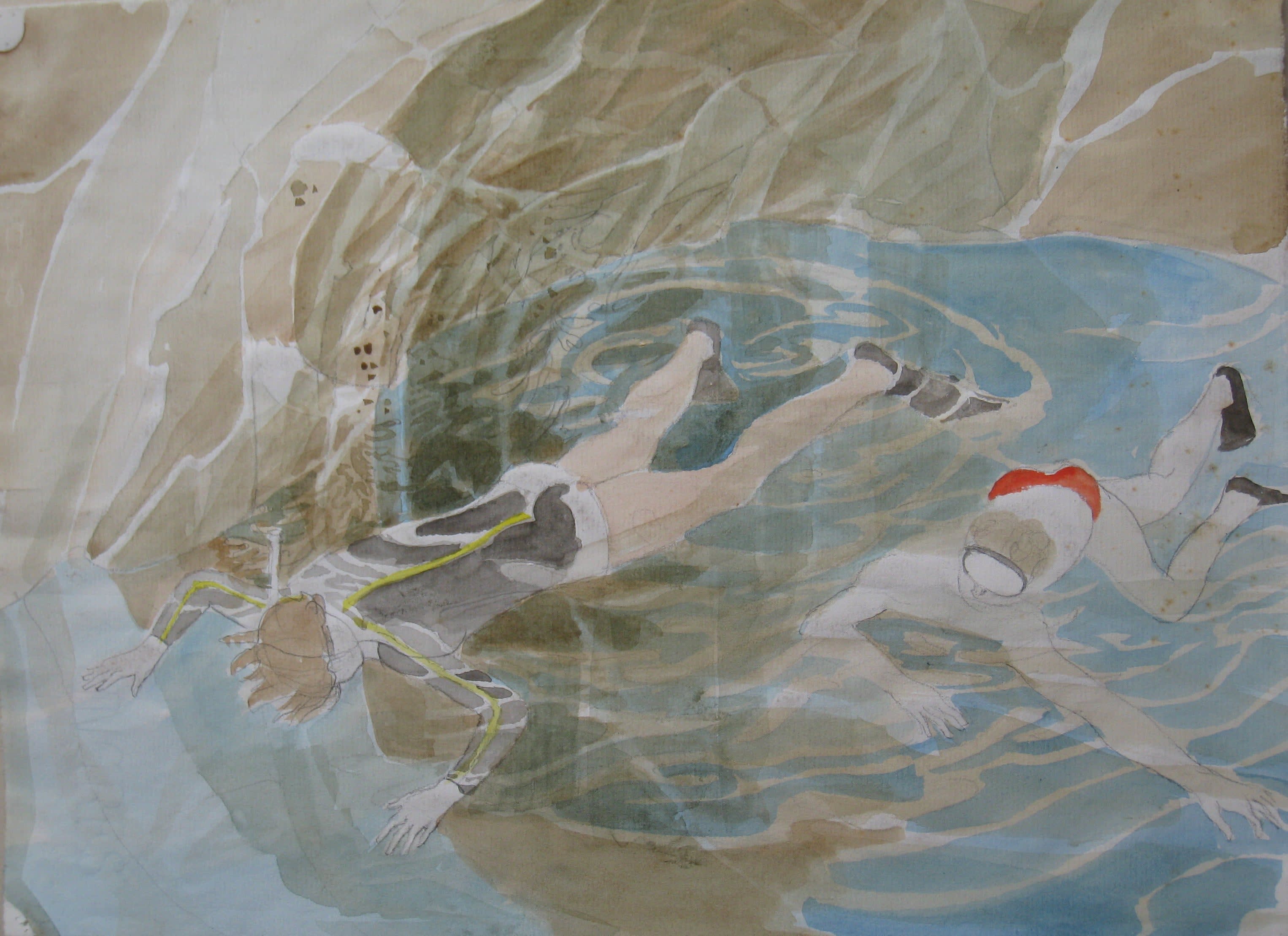John Stanton Ward CBE RA NEAC RWS RP (10 October 1917 – 13 June 2007) was an English portrait artist, landscape painter and illustrator. He was elected a member of the NEAC in 1951.
John Ward was born in Hereford, where his father, Russell Stanton Ward, ran an antique shop and restored paintings. He was the youngest in a family of seven children, living in a flat above the shop. His father died when he was young. He was educated at St Owen's School in Hereford, and then from 1932 to 1936 at the small Hereford School of Arts and Crafts. With financial support from the Principal, Sir William Rothenstein, he won a place at the Royal College of Art in London in 1936, where he studied under Gilbert Spencer, Barnett Freedman, Percy Horton, Charles Mahoney and Alan Sorrell, winning the prize for drawing.

Drawing of Cathedral (c. 1990s) by John Ward
He served in the Royal Engineers in the Second World War from 1939, and used his drawing skills to design pillboxes in Kent. He was posted to Belgium after the war, where he met his future wife Alison Williams in Ghent. He was demobbed in 1946, and returned to the Royal College of Art for one year, winning its travelling scholarship in 1947.
He drew illustrations for guides to Herefordshire and North Yorkshire. Finding that a Hereford Art School colleague was now Art Editor at Vogue, he obtained commissions to draw illustrations for the magazine from 1948 to 1952. He married Alison in 1950, and moved to Bilting Court – a Tudor house near Ashford, Kent – in 1954.
He taught at Wimbledon School of Art, and his volume of work and income expanded as his reputation and connections grew. He exhibited at Agnews Gallery, and at the Maas Gallery. He drew illustrations for Laurie Lee's ‘Cider with Rosie’ (1959), H. E. Bates's ‘The Darling Buds of May’ (1958) and ‘An Autobiography’ (1969–72) and for Joyce Grenfell's ‘George, Don't Do That’ (1977).
He made illustrations for a number of large companies - BP, Shell, Whitbread. He undertook portraits of royalty, cabinet ministers, city businessmen, and celebrities: Joyce Grenfell, Sir Michael Adeane, Sir Roger Bannister, Lord Denning, Norman Parkinson and Sir Arthur Norrington, and for members of the Society of Dilettanti and of Annabel's.
His royal portraits included Diana, Princess of Wales in her wedding dress, the Princess Royal, and the Duchess of Gloucester. He painted the christenings of Prince William and Prince Harry, and also gave drawing lessons to the former Prince of Wales (now King Charles). Fifteen of his portraits are held by the National Portrait Gallery. He also made ‘coloured drawings’ (drawings tinted with watercolour) of landscapes.

Drawing of Swimmers (c. early 1970s) by John Ward
He became an associate of the Royal Academy in 1956, and a full member in 1966 (he was a Trustee from 1985 to 1993). He and three other members of the Royal Academy resigned in 1997 in protest at the ‘Sensation’ exhibition. He never rejoined. He was also a member of the Royal Watercolour Society, the Royal Society of Portrait Painters (Vice-President from 1980 to 1985) and was elected to the New English Art Club in 1951. He received an honorary doctorate from University of Kent in 1982, and was appointed CBE in 1985.
He died in Bilting, Kent, and was survived by his wife, their four sons and two daughters. His daughter, Celia, is also a painter, as is his son Toby Ward who is also a NEAC member.
This is an edited version of the Wikipedia entry for John Stanton Ward.
Thanks to John's family for supplying the images that appear on this page. They flagged that not all are 'finished articles' but that they give an interesting insight to his work. You can view a good selection of John's paitings on the ArtUK or Artnet websites. Header image: Drawing of Urbino (1991) by John Ward.
FURTHER READING
- Guardian Obituary (with the enticing headline,"Prolific establishment artist who quit the Royal Academy in a row over modern 'ghastly muck'")
